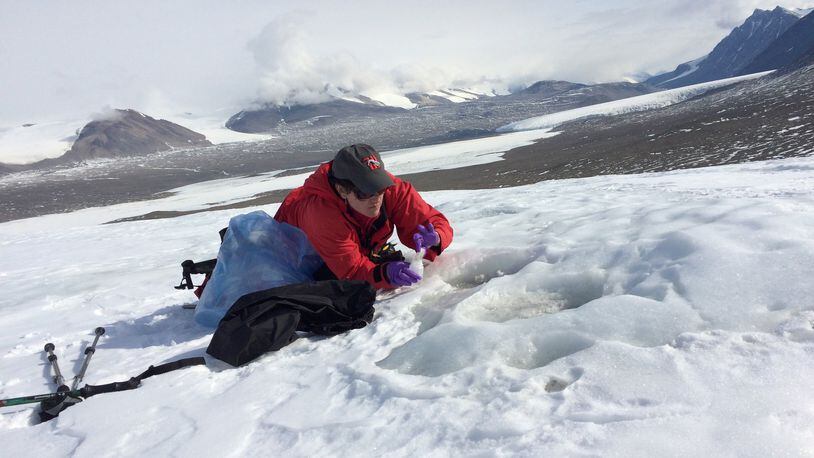RELATED: First female Wittenberg science prof leaves $2.3M to university
“What used to be our hottest temperatures are the new normal,” she said. “I’ve read that some people think there’s alarmism. But changes are occurring and they’re pretty dramatic.”
This was Fortner’s third time to Antarctica, Earth’s southernmost continent. Acting as a member of the Long Term Ecological Research team, she spent time in the McMurdo Dry Valleys — the 3 percent of the continent that isn’t snow- and ice-covered — studying glacier melting and results of an ice shelf breaking off.
As the southern hemisphere experienced its summer at the time, she said the temperature in the valleys were similar to Ohio’s winter, with the sun up for 24 hours.
“It was enchanting, you feel like an explorer,” Fortner said.
DETAILS: Clark County woman in all-female race Amelia Earhart flew in
She and others in the ecological station studied the nutrients in soil and basic properties that support life. The collected samples have just arrived back here and will occupy part of her summer.
Fortner will also take a sabbatical soon to write a paper on the Ohio River and the effects of climate change.
Fortner said people have to understand the review process takes time. In a results-driven age, that’s hard to accept for some, but necessary for accuracy.
With climate change a frequent news topic, Fortner said she’s seen the greatest evidence in Alaska over the years.
It was just over 20 years ago she made her first visit there and she’s noticed in recent years the changes in ice fields and glaciers melting, resulting in more water filling the ocean.
READ MORE: Wittenberg breaks ground on $40M complex to lure students
“It looked like a deflated balloon,” she said. “It’s powerful to see that.”
While she said glaciers are the best places to see the immediate effects of climate change, it can be witnessed here as well.
Extreme rainfall, higher flood levels and toxic algae resulting from warmer water temperatures are among the examples.
Fortner’s classes at Wittenberg are popular and she’s gratified to see students taking an interest. The most recent classes put together an action event on campus at the end of the year to raise awareness of environmental issues.
Also a member of the Citizens’ Climate Lobby, Fortner works with others to advocate for a bipartisan solution to climate change.
About the Author
